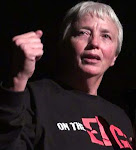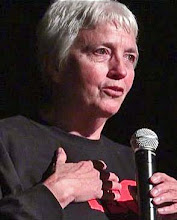How can the federal agency responsible for addressing the housing needs of adults and children with nowhere to go continue to deny their vulnerability and needs?
Members of Congress, criticized by Left, Right and in-between, hold the solution to this growing crisis in their hands. The Homeless Children and Youth Act, a bipartisan bill that requires no funding, would seismically change the way our nation views homelessness by inserting a dose of reality into HUD’s (US Dept. of Housing and Urban Development) inadequate definition of homelessness.
This issue sounds so obscure that it baffles most people. But changing how HUD defines homelessness threatens status quo so much that a major national nonprofit is fighting it tooth and nail. And, because this cause lacks slick lobbyists, this major paradigm shift could fade into oblivion, an unacceptable result. But a strong grass roots effort continues to push for the change.
 Homelessness, to most people, is manifested by raggedly dressed, addicted grizzled men on the street corner. Dubbed “chronically homeless” by HUD, meager federal resources have aimed at removing those considered eyesores from urban landscapes. Whether or not this endeavor has succeeded is a topic for another time.
Homelessness, to most people, is manifested by raggedly dressed, addicted grizzled men on the street corner. Dubbed “chronically homeless” by HUD, meager federal resources have aimed at removing those considered eyesores from urban landscapes. Whether or not this endeavor has succeeded is a topic for another time.
Those who call the streets home deserve a home. No doubt. But their numbers pale to the skyrocketing numbers of families and youth with nowhere to go. HUD reports a census of about 600,000 homeless people to Congress. Most elected officials likely picture the above-mentioned adults, causing a bare flicker of attention and even less resources.
In reality, schools have identified almost 1.3 million students experiencing homelessness, appalling enough, but that count doesn’t including younger/older siblings or parents. Included in this count, over 100,000 student-athletes, as recently--and poignantly--portrayed by Sports Illustrated.
Census methodologies vary, true. But the untold story of the shoving homeless families and youth under the federal rug deserves scrutiny.
The key difference between HUD’s drastic undercount and the US Dept. of Education census is how homelessness is defined.
HUD doesn’t consider “doubled up” as homeless despite the reality that 70% or more families/youth escape sleeping literally on the streets by staying temporarily with family, friends or acquaintances. HUD also doesn’t consider those staying in motels to be homeless. Not homeless, no matter how tenuous or precarious these arrangements may be. This denies the bleak reality of millions of vulnerable kids and adults. It clearly endangers them. And it keeps our country from making any progress addressing the massive and ever-growing issue of homelessness and housing-poverty.
The Homeless Children and Youth Act cracks open the process of how we define homelessness, injecting a huge dose of reality that needs to be addressed—the unmet needs of families and youth. Unlike now, local communities would have the option of directing HUD resources to families/youth. It opens the doors to counting families/youth in motels and doubled up for HUD’s Point-in-Time count.
URGENT ACTION! Keep this bill from swirling down the drain of Congressional inaction. Your congressional delegation needs to hear from you, urging them to co-sponsor this bill, a quick process on our website, www.helphomelesskidsnow.org.
We cannot continue to ignore the babies, toddlers, kids, teens, youth with nowhere to go. Too many of these vulnerable kids will tumble onto street corners in communities across the country where those “chronically homeless” adults once stood, a self-fulfilling prophecy of what happens when we ignore a problem that we could fix.
How to make this a compelling, viral message remains the challenge. Miley Cyrus and Miss Arizona have thrown their public reputations into the arena. Not sure that is enough, but it’s an appreciated gesture. But constituent action now is required.
Obviously our approach to this social crisis hasn’t worked well. It’s far past time to give up a losing strategy.








